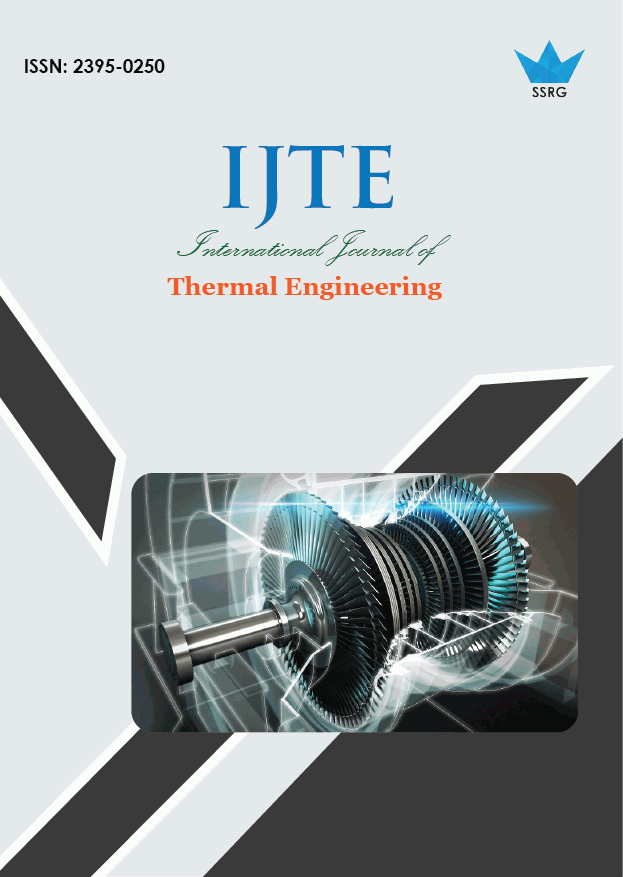Heat Transfer Investigation of Lagging Materials through Elastic Multilayers

| International Journal of Thermal Engineering |
| © 2015 by SSRG - IJTE Journal |
| Volume 1 Issue 1 |
| Year of Publication : 2015 |
| Authors : V.Shangari, R.Suji |
How to Cite?
V.Shangari, R.Suji, "Heat Transfer Investigation of Lagging Materials through Elastic Multilayers," SSRG International Journal of Thermal Engineering, vol. 1, no. 1, pp. 1-4, 2015. Crossref, https://doi.org/10.14445/23950250/IJTE-V1I1P101
Abstract:
An original elastic multilayer thermal lagging material is accessible for applications at harsh surroundings as high as 437 K or as low as 125 K. A heat transfer representation is conventional and solved to study heat transfer throughout the material, counting emission; solid heat relocate and gas heat transmit. Most of the flexible defending materials believe the very obligation of these special applications. Such materials ought to be light to decrease the burden, flexible to condense the barriers and energy expenditure, protecting to all kinds of hot, light and emission. Comparison connecting the investigational results and the imaginary calculation shows that the model is practicable to be applied in manufacturing. The temperature allocation of samples with 12, 17, 22, 27, 32 layers, correspondingly, the emission, solid and gas heat transfer of an illustration with 10 layers are analyzed at harsh environment (125 K and 437 K) and the normal circumstance as well. The theoretical thermal analysis provides an energetic training to an optimal intend of such protecting materials. In some way, our study can provide helpful support for further engineering applications of flexible thin-film solar cell.
Keywords:
flexible, multilayer insulation material, heat transfer, high-low temperature.
References:
[1] Jin-Jing Chena, B, Zheng Guoa, B, and Wei-Dong YU, Heat Transfer Analysis of Insulation Materials with Flexible Multi layers, Thermal Science, Year 2013, Vol. 17, No. 5, Pp. 1415-1420.
[2] Chen, J. J., Yu, W. D., A Numerical Analysis of Heat Transfer in an Evacuated Flexible Multilayer Insulation Material, Journal of Thermal Analysis and Calorimetry, 44 (2010), 18, pp. 2191-2203.
[3] Chen, J. J., Yu, W. D., Concept for High-low Temperature Resistance Arrangement within Multilayer Flexible Composite, Journal of Composite Materials, 101 (2010), 3, pp. 1183-1188.
[4] Spinnler, M., et al., Studies on High-temperature Multilayer Thermal Insulations, International Journal of Heat and Mass Transfer, 47 (2004), 6-7, pp. 1305-1312.
[5] Hofmann, A., the Thermal Conductivity of Cryogenic Insulation Materials and Its Temperature Dependence, Cryogenics, 46 (2006), 11, pp. 815-824.
[6] Krishna prakas, C. K., Radiation Heat Transfer in a Participating Medium Bounded by Specular Reflectors, Heat Mass Transfer, 25 (1998), 8, pp. 1181-1188.

 10.14445/23950250/IJTE-V1I1P101
10.14445/23950250/IJTE-V1I1P101